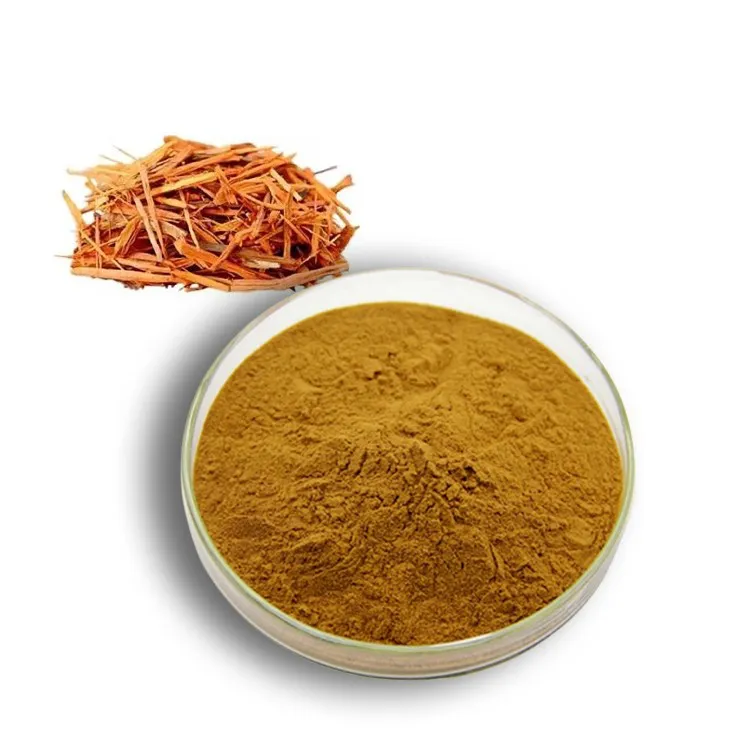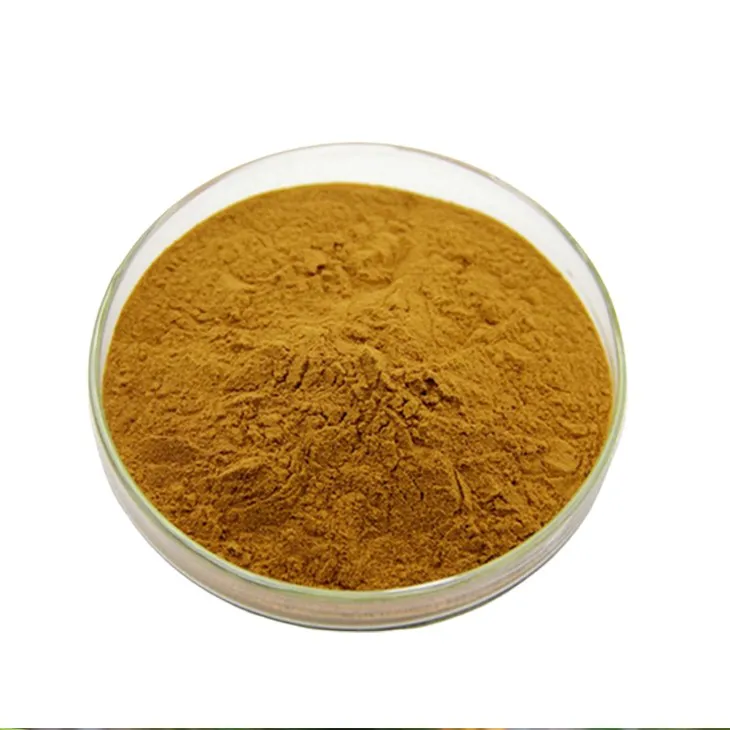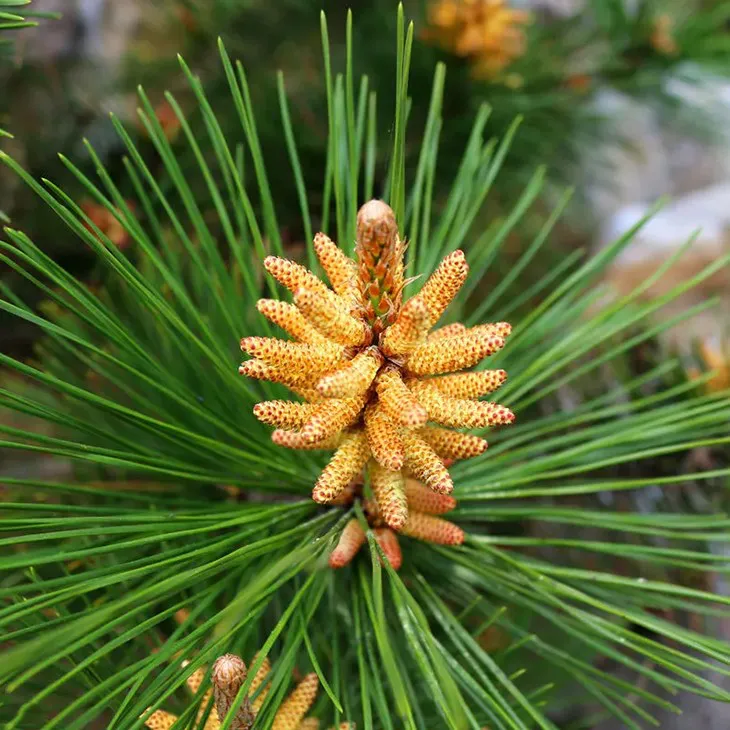- 0086-571-85302990
- sales@greenskybio.com
Exploring the Science Behind Yellow Pine Extract: Research Findings and Studies
2024-07-04

1. Introduction to Yellow Pine Extract
Yellow Pine Extract is a natural substance derived from the yellow pine tree. This extract has been the subject of increasing scientific research in recent years due to its potential in various fields. The yellow pine tree, which is native to certain regions, has been used in traditional medicine in some cultures for centuries. However, modern scientific research is now delving deeper into the chemical composition and properties of its extract.

2. Chemical Composition of Yellow Pine Extract
2.1. Phytochemicals
Yellow pine extract contains a variety of phytochemicals. These include flavonoids, which are known for their antioxidant properties. Flavonoids in the extract may play a role in protecting cells from oxidative stress. Additionally, there are phenolic compounds present. Phenolic compounds have been associated with anti - inflammatory effects and may contribute to the overall health - promoting properties of the extract.
2.2. TerpenesTerpenes are another important component of yellow pine extract. They are responsible for the characteristic smell of the pine tree. Some terpenes have been shown to have antimicrobial properties. For example, certain terpenes in the extract may be effective against bacteria and fungi, which could potentially be useful in the development of natural antimicrobial agents.

3. Biological Processes and Yellow Pine Extract
3.1. Antioxidant Activity
The antioxidant activity of yellow pine extract is of great significance. Oxidative stress is linked to numerous health problems, including aging, cardiovascular diseases, and certain cancers. The flavonoids and other antioxidant components in the extract can scavenge free radicals in the body. Free radicals are unstable molecules that can damage cells and DNA. By neutralizing these free radicals, the extract may help in reducing the risk of various diseases.
3.2. Anti - Inflammatory Effects
Inflammation is a natural response of the body to injury or infection, but chronic inflammation can lead to serious health issues. The phenolic compounds in yellow pine extract have been found to exhibit anti - inflammatory properties. They can modulate the body's immune response and reduce the production of inflammatory mediators. This could potentially be beneficial in the treatment of inflammatory diseases such as arthritis.
3.3. Role in Cell Signaling
Yellow pine extract may also play a role in cell signaling. Cell signaling is a complex process that allows cells to communicate with each other and regulate various biological functions. Some of the components in the extract may interact with cell receptors and influence intracellular signaling pathways. This could have implications for cell growth, differentiation, and apoptosis (programmed cell death). For example, it may help in promoting the growth of healthy cells while inhibiting the growth of abnormal cells such as cancer cells.

4. Potential Uses in Industry
4.1. Cosmetics and Skincare
- The antioxidant and anti - inflammatory properties of yellow pine extract make it a potentially valuable ingredient in cosmetics and skincare products.
- It can be used in anti - aging creams to help reduce wrinkles and improve skin elasticity. The antioxidant components can protect the skin from environmental damage such as UV radiation and pollution.
- For acne - prone skin, the antimicrobial properties of the extract may help in reducing the growth of acne - causing bacteria.
4.2. Food and Beverage
- In the food and beverage industry, yellow pine extract could be used as a natural preservative due to its antimicrobial properties. It can help in extending the shelf - life of food products without the need for synthetic preservatives.
- Some studies have also explored the possibility of using the extract as a flavoring agent. The characteristic pine flavor can add a unique taste to certain products, such as herbal teas or confectionery items.
4.3. Pharmaceuticals
- The potential health - promoting properties of yellow pine extract make it an interesting candidate for pharmaceutical research.
- It could be developed into drugs or dietary supplements for the treatment of various diseases, such as those related to oxidative stress or inflammation. However, more in - depth research is needed to determine its safety and efficacy in human clinical trials.
5. Research Studies on Yellow Pine Extract
5.1. In - vitro Studies
In - vitro studies have been crucial in understanding the basic properties of yellow pine extract. These studies are carried out in a laboratory setting using cell cultures. For example, researchers have cultured skin cells and exposed them to yellow pine extract to study its antioxidant and anti - inflammatory effects on the cells. In - vitro studies have shown that the extract can reduce oxidative damage to skin cells and inhibit the production of inflammatory cytokines in these cells.
5.2. Animal Studies
- Animal studies have provided further insights into the potential effects of yellow pine extract. In studies on mice, for instance, the extract has been administered to mice with induced arthritis.
- The results have shown that the extract can reduce joint swelling and improve the mobility of the arthritic mice. This indicates its potential anti - inflammatory effect in vivo.
- Animal studies have also been conducted to study the extract's effect on the cardiovascular system. Some studies have suggested that the extract may have a beneficial effect on blood lipid levels in animals, which could potentially translate to humans.
5.3. Human Clinical Trials
- Although human clinical trials on yellow pine extract are still in the early stages, some initial studies have been carried out.
- One small - scale clinical trial investigated the use of yellow pine extract in patients with mild skin inflammation. The results showed a reduction in skin redness and itching in some of the participants, suggesting its potential as a treatment for skin conditions.
- However, larger and more comprehensive clinical trials are needed to fully establish the safety and effectiveness of the extract in humans for various applications.
6. Safety and Considerations
6.1. Allergic Reactions
Some individuals may be allergic to yellow pine extract. Allergic reactions can range from mild skin rashes to more severe respiratory problems. It is important to conduct proper allergy testing before using products containing the extract, especially in individuals with a history of allergies to pine or related plants.
6.2. Dosage and StandardizationDetermining the appropriate dosage of yellow pine extract is crucial. Without proper standardization, the potency of different extracts may vary, which can affect their safety and effectiveness. More research is needed to establish standardized dosage guidelines for different applications of the extract.
7. Conclusion
Yellow pine extract is a fascinating natural substance with a rich chemical composition and potential in various fields. The research findings so far have shown its promising properties in biological processes such as antioxidant and anti - inflammatory activities. It also has potential uses in industries such as cosmetics, food, and pharmaceuticals. However, more research, especially in the form of large - scale human clinical trials, is needed to fully understand its safety and effectiveness. With further research, yellow pine extract may hold the key to the development of new natural products and therapies in the future.
FAQ:
What are the main biological processes in which yellow pine extract is involved?
Yellow pine extract has been found to be involved in several biological processes. For example, it may play a role in antioxidant mechanisms within cells. Antioxidants in the extract can help combat oxidative stress by neutralizing free radicals. It could also potentially be involved in cell signaling pathways, although more research is needed to fully understand these aspects. Additionally, some studies suggest that it might have anti - inflammatory properties, which could be related to its interaction with certain immune cells and the regulation of inflammatory mediators.
How can yellow pine extract be potentially used in the industry?
The potential industrial uses of yellow pine extract are quite diverse. In the cosmetic industry, due to its antioxidant and possible anti - inflammatory properties, it could be used in skincare products. It might be added to creams and lotions to help protect the skin from environmental damage and aging. In the food industry, it could potentially be used as a natural preservative. Its antioxidant nature can help prevent the spoilage of food products by inhibiting lipid oxidation. Moreover, in the pharmaceutical industry, if further research validates its medicinal properties, it could be used as an ingredient in medications, especially those aimed at treating inflammation - related diseases.
What are the chemical components of yellow pine extract?
Yellow pine extract contains a variety of chemical components. These include phenolic compounds, which are known for their antioxidant properties. Flavonoids are also present, which may contribute to the anti - inflammatory effects. Terpenoids are another group of components found in the extract. These chemical substances can have different biological activities, such as antimicrobial and anti - cancer properties in some cases, although more research is required to determine their exact roles and effectiveness in yellow pine extract specifically.
Are there any potential side effects of yellow pine extract?
Currently, research on the side effects of yellow pine extract is limited. However, as with any natural extract, there could be potential risks. Some people may have allergic reactions to the components in the extract. Since it may have biological activities such as anti - inflammatory effects, excessive use could potentially disrupt the body's normal immune and inflammatory balance. Also, if used in combination with certain medications, there could be interactions, although no such interactions have been well - documented yet. More research is needed to comprehensively assess the potential side effects.
How is yellow pine extract obtained?
Yellow pine extract is typically obtained through extraction processes. The most common method is solvent extraction. In this process, solvents such as ethanol or methanol are used to dissolve the active components from the yellow pine material, which could be the bark, needles, or wood. After extraction, the solvent is removed, usually through evaporation, leaving behind the concentrated extract. Other extraction techniques may also be explored to optimize the yield and quality of the extract, such as supercritical fluid extraction, which can offer advantages in terms of selectivity and purity.
Related literature
- Studies on the Antioxidant Properties of Yellow Pine Extract"
- "The Role of Yellow Pine Extract in Anti - Inflammatory Responses: A Review"
- "Chemical Composition and Potential Industrial Applications of Yellow Pine Extract"
- ▶ Hesperidin
- ▶ citrus bioflavonoids
- ▶ plant extract
- ▶ lycopene
- ▶ Diosmin
- ▶ Grape seed extract
- ▶ Sea buckthorn Juice Powder
- ▶ Beetroot powder
- ▶ Hops Extract
- ▶ Artichoke Extract
- ▶ Reishi mushroom extract
- ▶ Astaxanthin
- ▶ Green Tea Extract
- ▶ Curcumin Extract
- ▶ Horse Chestnut Extract
- ▶ Other Problems
- ▶ Boswellia Serrata Extract
- ▶ Resveratrol Extract
- ▶ Marigold Extract
- ▶ Grape Leaf Extract
- ▶ blog3
-
Camu Camu Extract
2024-07-04
-
Thunder God Vine Extract
2024-07-04
-
melatonin extract
2024-07-04
-
Boswellia Serrata Extract
2024-07-04
-
Fenugreek Extract Powder
2024-07-04
-
Hops Extract
2024-07-04
-
Lemon Balm Extract
2024-07-04
-
Elderberry Extract
2024-07-04
-
Mango flavored powder
2024-07-04
-
Alisma Extract
2024-07-04





















